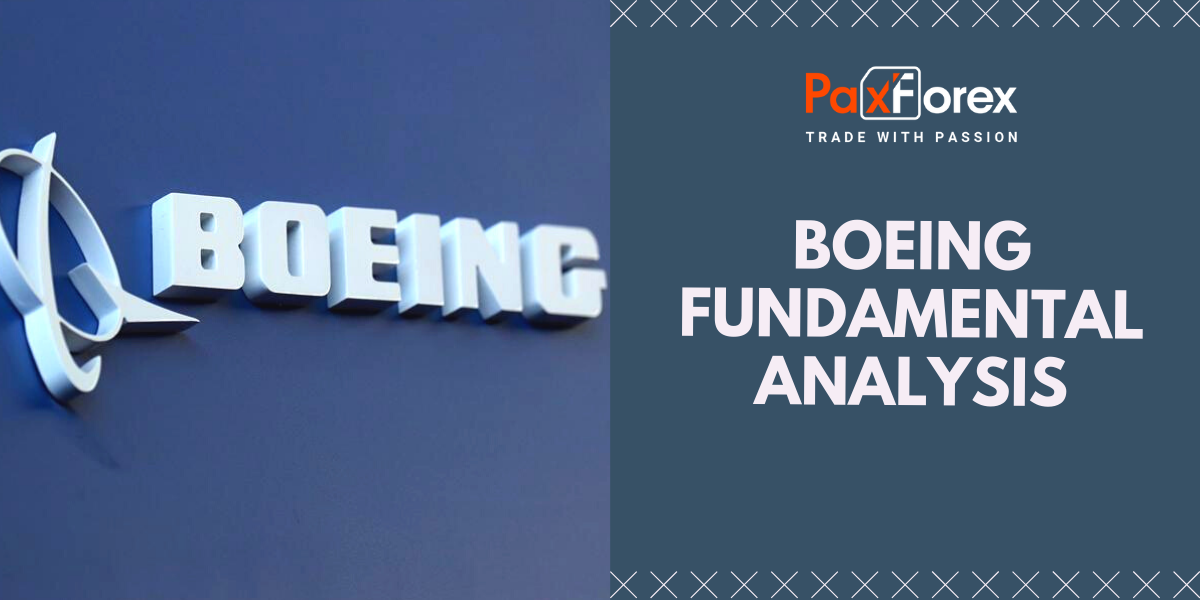
Boeing has repeatedly disappointed investors and customers over the past few years. Since the beginning of 2019 alone, most of the company's major revenue-generating aviation and defense programs have faced significant setbacks.
On Wednesday, when Boeing reported Q4 results, investors were once again disappointed. The aerospace giant recorded a huge quarterly loss and offered a poor outlook for 2022.
Boeing's earnings were $14.8 billion, down from $15.3 billion a year earlier. That far beat even analysts' most pessimistic forecasts. In 2018, Boeing generated more than $28 billion in fourth-quarter revenue.
Meanwhile, large one-time expenses led Boeing to report a quarterly basic operating loss of $4.5 billion and a basic loss per share of $7.69. Those expenses included $3.5 billion to cover customer liabilities and other costs related to the suspension of 787 Dreamliner deliveries to address multiple quality control issues, $402 million for further cost increases on the troubled KC-46 tanker program, and $220 million for inventory write-downs in the services division.
Still, there were two positive moments in Boeing's fourth-quarter results. First, the company received several large orders for commercial aircraft during the quarter as it works to rebuild its order book. Second, the company shocked many investors by generating a positive free cash flow of $494 million for the quarter.
Nevertheless, Boeing may have proposed big discounts to get many of the 737 MAX orders it recorded last quarter. If so, this would limit future revenues and profits from those orders.
Underscoring this point, Boeing delivered 99 commercial aircraft in Q4 (up 68% from 59 a year earlier), but revenue in the commercial aircraft segment was up less than 1%. On the cash flow side, management acknowledged that the company took advantage of some favorable timing factors in the quarter.
Boeing expects its financial performance to improve in 2022. That's not surprising. Increased deliveries of the 737 MAX and the resumption of deliveries of the 787 Dreamliner should contribute to significant growth in revenue, earnings, and cash flow.
Nevertheless, Boeing encounters multiple near-term obstacles, including an ongoing pause in 787 deliveries and the impact of a new coronavirus strain on the aviation industry. As a result, Chief Financial Officer Brian West warned that this quarter's cash outlay could be the same as the first quarter of 2021 when Boeing burned through $3.7 billion.
Throughout the year, Boeing still expects positive free cash flow as it finally begins to reduce finished goods inventories. But customer compensation related to the 737 MAX landing situation and delayed delivery of the 787, unfavorable timing of funds in the defense business, and other working capital hurdles will negate much of that benefit. Management has not indicated an exact cash flow target, but its guidance implies that free cash flow in 2022 will be fairly modest by pre-pandemic standards.
Boeing ended 2021 with more than $40 billion in net debt, up from about $5 billion three years earlier. Based on the company's current forecast, Boeing won't start making significant progress on debt reduction until 2023, when the pace of aircraft deliveries will be closer to normal.
That means Boeing will have many more years to fix its balance sheet, which will stop it from returning any meaningful amount of cash to shareholders until 2025. Even after 2025, the company will have to juggle shareholder interest in dividends and share repurchases with the large investments needed to upgrade its commercial aircraft portfolio.
Boeing also won't be able to capitalize on the long-term growth of commercial aviation. In particular, the market has shifted toward larger narrow-body aircraft, where Airbus offers clearly better products, at the expense of more expensive wide-body aircraft and less efficient mid-sized narrow-body aircraft.
Boeing stock is still trading well below pre-pandemic levels, which may seem like a bargain. However, given the company's weak balance sheet and mediocre prospects in its core commercial aviation market, investors may find better deals elsewhere.
As long as the price is below 142.70, follow the recommendations below:
- Time frame: D1
- Recommendation: short position
- Entry point: 135.13
- Take Profit 1: 125.20
- Take Profit 2: 121.70
Alternative scenario:
If the level of 142.70 is broken-out, follow the recommendations below:
- Time frame: D1
- Recommendation: long position
- Entry point: 142.70
- Take Profit 1: 148.90
- Take Profit 2: 152.60













